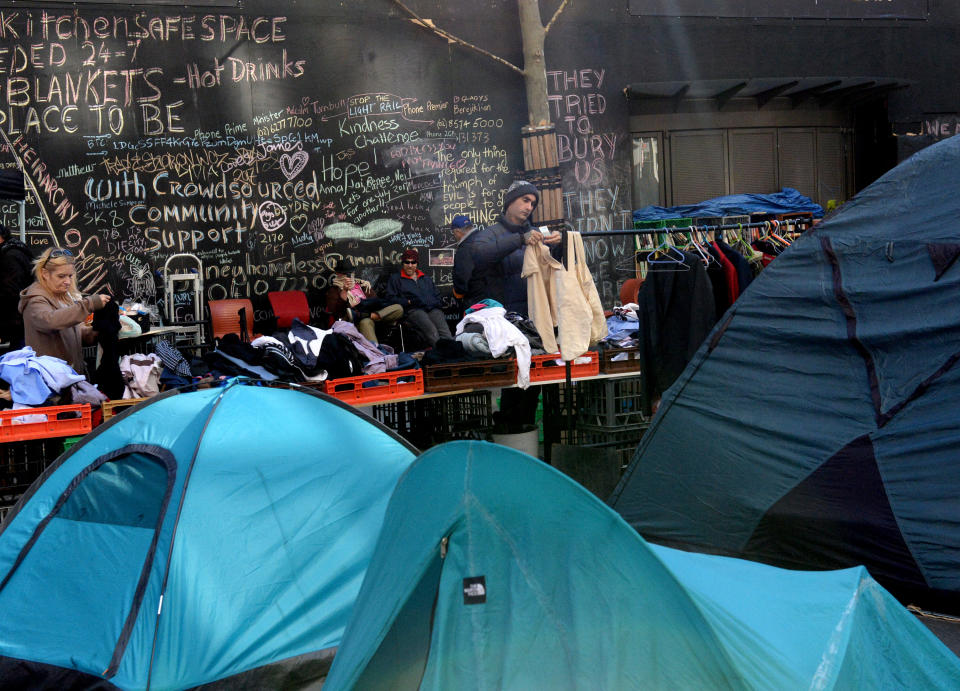The problem with Luke Howarth’s ‘positive spin on homelessness’

Australia’s charities have blasted the Assistant Minister for Homelessness’ comments as simplistic and out of touch, after Luke Howarth called for a “positive spin” on the issue affecting more than 100,000 Australians.
Speaking to the ABC yesterday, Howarth said he wants to put a “positive spin” on homelessness in his time in the role, emphasising that only 0.5 per cent of Australians are homeless.
“99.5 per cent of Australians are homed and living in safe places. There’s half a per cent of the population that isn’t. We want to make sure that that 0.5 per cent are in homes as quickly as possible and we’re doing what we can to go out there and talk to people in the sector and find out how we do it,” Howarth said.
“I want to put a positive spin on it as well and not just say Australia’s in a housing crisis when it affects a very, very small percentage of the population.”
However, with more than 116,000 homeless people in Australia, the issue calls for a far more considered response, Homelessness Australia chair Jenny Smith told Yahoo Finance.
As she explained, there are 82,000 people waiting for social housing in Victoria alone. If they were to stand in a queue, that line would be 42km long.
“Downplaying the homelessness crisis doesn’t make the problem go away. There is no positive spin to the fact that 116,000 Australians do not have a safe, permanent home,” Smith said.
“We must not ignore the facts. In the five years to 2016, homelessness in Australia rose 14 per cent to 116,427. In the five years to 2018 the number of people seeking help from homelessness support service rose by 20 per cent to 288,795. These are facts.
Related story: What will it take to fix homelessness in Australia?
“Just because the population rises does not mean that we should be satisfied with homelessness increasing.”
Major David Eldridge from the Salvation Army agreed, calling for a “less simplistic response to a complex issue”.
One homeless person is too many, Eldridge argued, so more than 100,000 is appalling.
“I don't think any community should say there's an acceptable level of homelessness because that's children sleeping in cars with their mums who are escaping domestic violence, young people who have left home for a range of reasons, older women who have run out of superannuation and veterans.”
Emergency accommodation or affordable accommodation: which is better?
Howarth said his priority would be on increasing the availability of emergency and crisis accommodation.
"There are a number of areas and I'll be focusing on all of them, but I think people on the street is important because that's what Australians see if they're in a capital city," he said.
Related story: The welfare program leading single parents into poverty
"They can see people on the street - they want something done about that.”
“What I'm hearing from people that are on the ground is that emergency accommodation is a really important issue and we need more emergency accommodation.”
However, Smith warned that it’s impossible to house homeless people without homes available, arguing that a greater supply of social and affordable homes is critical. She said Australians are currently stuck in crisis housing for extended periods as they have nowhere to go.
The national Everybody’s Home campaign, of which Homelessness Australia is a part, is calling for 500,000 new social and affordable homes to be built across the country by 2026, in addition to increases to Newstart and Commonwealth Rent Assistance.
Related story: Australia’s most unaffordable city for renters named
“In the last 20 years we've had this big focus on economics but an unhealthy community where there's significant amounts of social need is an unhealthy economy,” added Aldridge.
He said that while there is a need for more emergency accommodation, this stems from the fact that current emergency accommodation is at a bottleneck due to a lack of affordable housing.
And, building more affordable housing could serve a dual purpose: helping fight homelessness and provide a boost to a flagging economy.
“I really think the solution is about building significant amounts of public and social housing and that would stimulate the economy,” he said.
“We talk about ways to stimulate the economy, well - building houses is a great way to stimulate the economy and it employs people and houses people.”
But, he admitted, this sort of action requires significant political heft and partnerships between federal, state and local governments in addition to the local community and business sectors.
The challenge is forming those partnerships in a political atmosphere which accepts current levels of homelessness, he added.
“We know why people are homeless but we don't attack the causes. This [Howarth’s comments] is just another attempt to say it's not that big a problem, we can sort this out by just doing a bit of emergency accommodation.”
Until Australians put faces to the figures it’s unlikely that the political will required to address the problem will surface, he continued.
“Until the politicians and the general community start to see face to face some of that pain and not accept homelessness, then we're a community that's losing some of its identity.”
Make your money work with Yahoo Finance’s daily newsletter. Sign up here and stay on top of the latest money, property and tech news.

 Yahoo Finance
Yahoo Finance 
